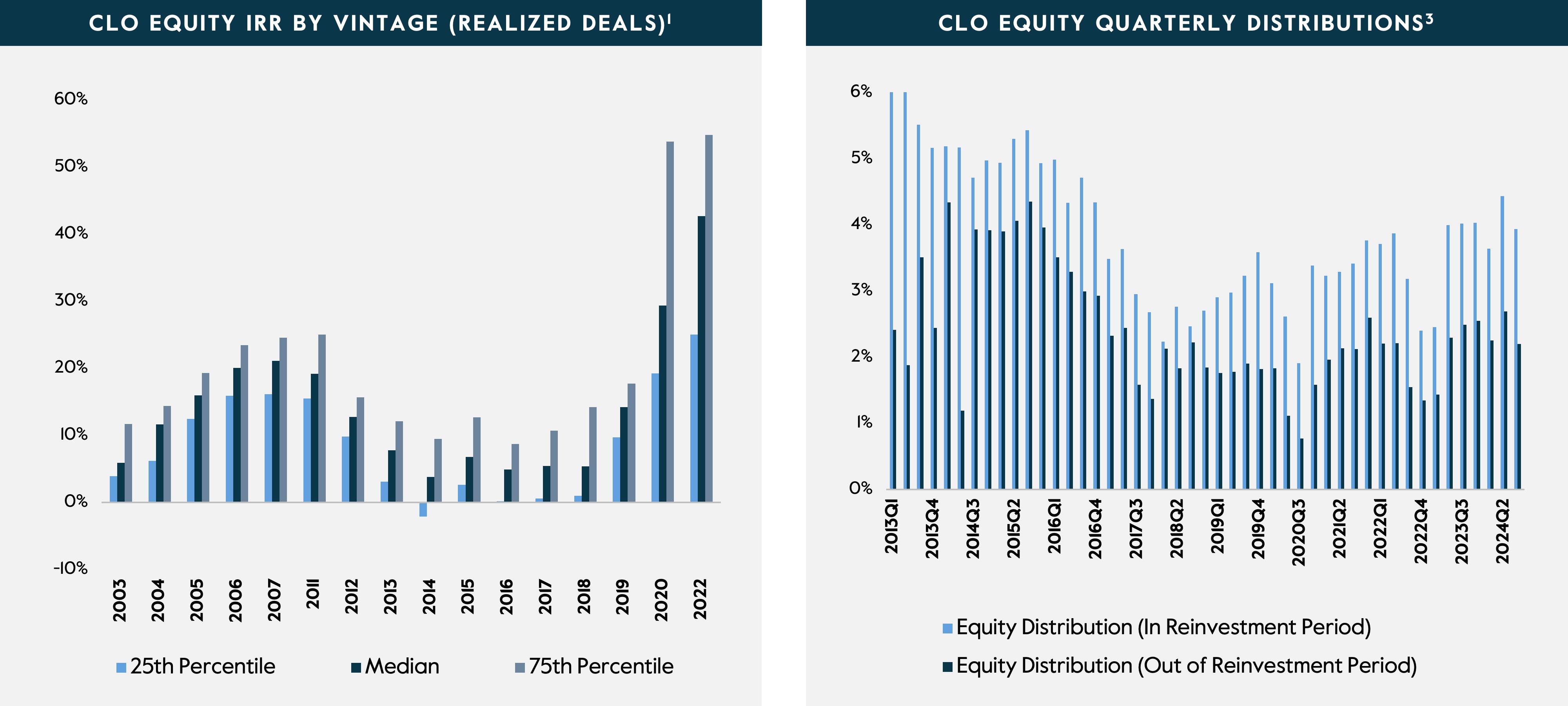Collateralized loan obligations (“CLOs”) have a multi-decade track record of withstanding market shocks including the global financial crisis (GFC), global energy crisis, COVID-19, and 2022 volatility.
- CLO equity has historically generated high cash-on-cash returns2 with an average annual CLO equity distribution of ~16%.3
- All CLO vintages have on an aggregate basis achieved a positive return with an average return of ~13% for realized deals.3

- CLOs consist of diversified portfolios of broadly syndicated, liquid, senior secured corporate loans with an average facility size of $1bn.4
- Each CLO typically has more than 200 distinct loans diversified across a wide range of industries.
- Loans are senior to bonds and equity with first priority to underlying collateral pledged by the borrower. As a result, loans have a historical high recovery rate of 63%5
- Since inception in 1997, the LSTA U.S. Leveraged Loan Index has only had 3 years of negative returns6

- The U.S. CLO market is over $1 trillion in size today and continues to grow.7
- The LSTA U.S. Leveraged Loan Index has grown from $1.20 trillion to $1.40 trillion over the last five years.4 Since CLOs account for over 60% of the U.S. leveraged loan market, the growth of the loan market creates a need for CLO creation.8

- CLOs have long-term financing (typically 13 years)
- CLOs generally are not subject to covenants requiring margin calls or forced liquidations triggered by decreases in the value of collateral.
- CLOs are actively managed vehicles with five year reinvestment periods
- Reinvestment allows for ongoing portfolio optimization
- Since financing is locked-in for an extended period, CLOs benefit from volatility as they can purchase loans at discounted prices and / or higher spreads to increase returns
- Detailed monthly reporting provided by an independent trustee
- Reports include name-by-name positions in the CLO and calculations of required tests
1 Past performance is not indicative of future results. For illustrative purposes only. Performance shown is across the entire CLO equity market. There are not enough realized 2021 vintages for performance data. There can be no assurance that this performance will continue or that the CCIF’s performance will equal or exceed that of any applicable vintage in which it invests. Performance of the overall market does not reflect any management fees, taxes, transaction costs and other expenses (“Fees & Expenses”) to be borne by the fund, which will reduce returns.
2 A rate of return ratio that calculates the total cash earned on the total cash (equity) invested in a deal.
3 BAML Research as of December 31, 2023. Average Distribution (In Reinvestment Period) is the average of Median Quarterly Equity Distribution (In Reinvestment Period)
4 For illustrative purposes only. Past performance is not indicative of future results. LCD, Comps Index Components as of December 31, 2023. 5) Moody’s Investor Services corporate debt data from 1983 – 2021. 6) LCD, LSTA Leveraged Loan Index as of December 31, 2023.
5 Moody’s Investor Services corporate debt data from 1983 – 2021.
6 LCD, LSTA Leveraged Loan Index as of December 31, 2023.
7 Citi Research as of December 31, 2023. There can be no guarantee that these trends will continue.
8 LCD CLO Global Databank as of December 31, 2023.